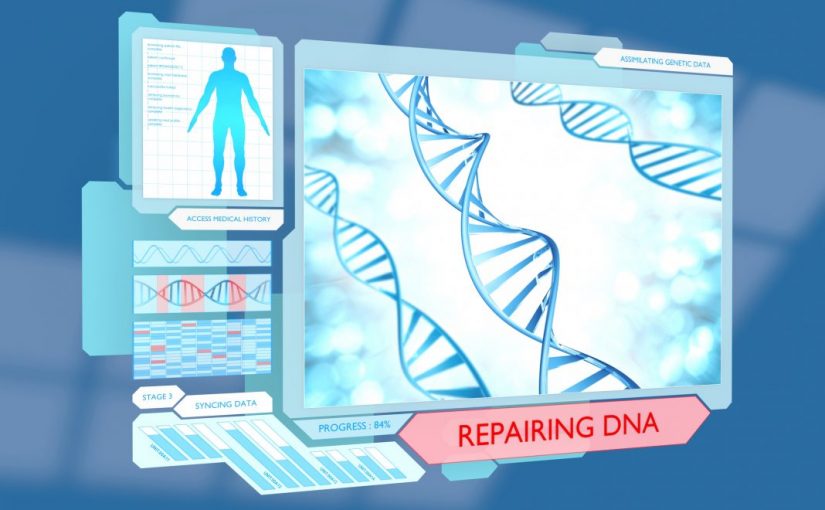Since tumors often have unique defects in the DNA damage response (DDR) pathway, identifying the molecular mechanisms that underlie how cells repair various DNA lesions is critical to selecting the appropriate clinical treatments. Inhibitors to poly-(ADP-ribose) polymerase (PARP) are examples of drugs that successfully exploit the DDR pathway and have become an effective cancer therapy for individuals with BRCA mutations. Yet, in recent years, evidence has begun to mount suggesting that PARP inhibitors may be very effective for ovarian tumors that do not contain BRCA mutations, however, the mechanism for this phenomenon has been unclear. Now, investigators from George Washington University (GW) Cancer Center have just identified a potential genomic signature that would expand the benefits of PARP inhibitors.
“Poly-(ADP-ribose) polymerase inhibitors (PARPi) selectively kill breast and ovarian cancers with defects in homologous recombination (HR) caused by BRCA1/2 mutations,” the authors stated. “There is also clinical evidence for the utility of PARPi in breast and ovarian cancers without BRCA mutations, but the underlying mechanism is not clear.”
Findings from the new study—published today in Nature Communications through an article entitled, “The deubiquitylating enzyme USP15 regulates homologous recombination repair and cancer cell response to PARP inhibitors”— found that the enzyme USP15 could potentially lead to new treatments for breast and pancreatic cancer.
“With this study, we validate the role of USP15 in maintaining genome stability and tumor suppression and inform novel treatments for breast cancer,” explained senior study investigator Huadong Pei, PhD, assistant professor of biochemistry and molecular medicine at the GW School of Medicine and Health Sciences. “With consistent research and progress of current studies, we will gain a stronger understanding and a more comprehensive view of USP15 functions in cancer and their role in future treatment strategies.”
The Cancer Genome Atlas indicates that USP15 enzyme deletions occur in 16% of breast cancers and in 5% of pancreatic cancers. Studies have shown that cancer-associated USP15 mutations increase PARP inhibitor sensitivity in cancer cells. The GW team found that USP15 regulates homologous recombination—one of the major pathways to repair DNA damage affecting broth strands of the double helix—and cancer cell response to PARP inhibitors.
“Mechanistically, USP15 is recruited to DNA double-strand breaks (DSBs) by MDC1, which requires the FHA domain of MDC1 and phosphorylated Ser678 of USP15,” the authors wrote. “Subsequently, USP15 deubiquitinates BARD1 BRCT domain, and promotes BARD1-HP1γ interaction, resulting in BRCA1/BARD1 retention at DSBs. USP15 knockout mice exhibit genomic instability in vivo. Furthermore, cancer-associated USP15 mutations, with decreased USP15-BARD1 interaction, increases PARP inhibitor sensitivity in cancer cells.”
USP15 is part of a group of deubiquitinating enzymes, responsible for removing ubiquitin chains from proteins and other molecules, which play important roles in maintaining genome stability. Based on their research, Pei and his team believe USP15 may function similarly to the USP4 enzyme, which was found to play a role in DNA repair by Pei’s group four years ago.
“USP15 is a potential biomarker for treatments of pancreatic cancer, as well as breast and ovarian cancers,” noted lead study investigator Yihan Peng, a PhD student in Pei’s lab.
Subsequently, the research team will use patient-derived tissue graft models to examine the impact of the USP15 enzyme on radiochemotherapy response. Additionally, they will perform high-throughput screening for USP15 inhibitors.
“Our results identify a novel regulator of homologous recombination, which is a potential biomarker for therapeutic treatment using PARP inhibitors in cancers,” the authors concluded.
This article was published by GEN.


